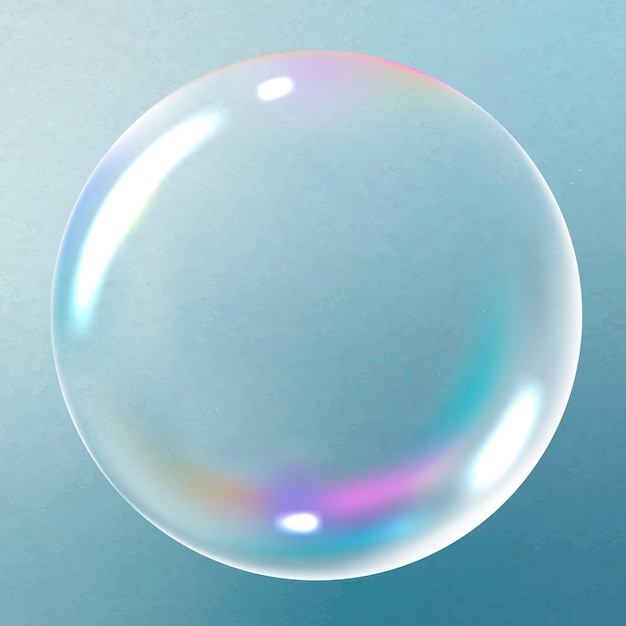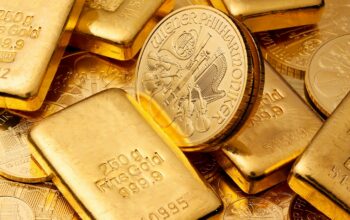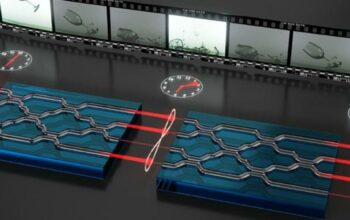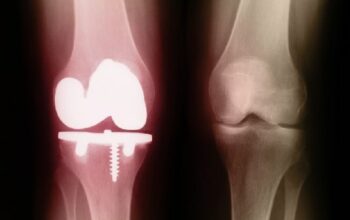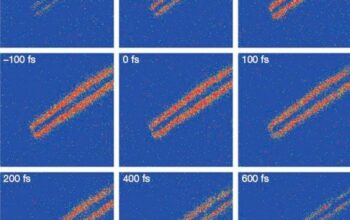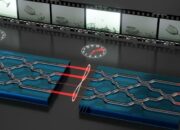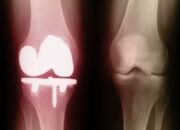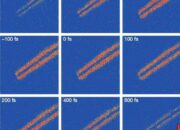The observation of bubble cavitation within liquid crystals presents an intriguing intersection of fluid dynamics and condensed matter physics. This phenomenon, where gaseous bubbles form and collapse within a liquid medium, leads to an array of insights pertaining to the fundamental properties of materials at microscale levels. In this discourse, we shall explore the underlying mechanisms of bubble cavitation, its implications for liquid crystal behavior, and how these findings may contribute to advancements in various fields, including materials science and engineering.
Understanding Bubble Cavitation
Bubble cavitation, by definition, involves the formation of vapor-filled bubbles in a liquid medium, which subsequently collapse under specific pressure conditions. This event is driven primarily by changes in pressure and temperature within the liquid. When localized regions of low pressure form, the liquid is capable of reaching its vapor phase, leading to the nucleation of bubbles. Under high-energy conditions, such as rapid fluid motion or acoustic waves, these bubbles can experience significant growth followed by explosive collapse, releasing energy and generating shock waves that can profoundly affect the surrounding medium.
The mechanisms of bubble collapse are critically influenced by parameters such as viscosity, surface tension, and inertial forces. As the bubble implodes, the rapid inward motion generates localized hot spots that reach extreme temperatures and pressures, which can induce chemical reactions and contribute to material erosion. This transient phenomenon exemplifies the chaotic dynamics present within fluid systems and sets the stage for understanding how bubble cavitation can manifest in more complex materials, such as liquid crystals.
Liquid Crystals: A Brief Overview
Liquid crystals exhibit unique properties, residing between the solid and liquid states. Their molecular ordering allows for considerable flexibility, which in turn invites diverse applications in display technologies and beyond. These materials can be classified into several categories: nematic, smectic, and cholesteric, based on their distinct molecular arrangements and orientational behaviors. The interplay between the molecules in these phases creates intricate electromagnetic responses, which are pivotal in applications involving optical devices.
The presence of bubbles within liquid crystals introduces a fascinating complexity. As bubbles are formed in a liquid crystal medium, they can influence the orientation of the surrounding liquid crystal molecules. The interaction between the bubbles and the liquid crystals can lead to the emergence of new physical phenomena, including changes in the alignment and reorientation of liquid crystalline mesogens, which can, in turn, impact the optical properties and mechanical strength of the system.
Interactions Between Bubbles and Liquid Crystals
The dynamics of bubble cavitation can drastically alter the local structure of liquid crystals. The introduction of a bubble can induce a distortion field in the vicinity, prompting a reorganization of the liquid crystal’s molecular arrangement. The surface of the bubble exerts forces on the liquid crystal structure, leading to a reconfiguration of molecular orientations. This interaction may result in various phenomena, including the manipulation of director fields, which govern the alignment of liquid crystalline molecules.
Furthermore, the collapse of these bubbles does not merely represent a transient event; rather, it acts as a catalyst for myriad phase transitions within the liquid crystal. The shock waves generated during bubble implosion can resonate throughout the liquid crystal matrix, generating regions of high shear and stress, which may contribute to the creation of defects. The emergence of such defects can enhance the understanding of defect dynamics in liquid crystalline materials and unveil pathways for potential applications in tunable optical devices.
Applications and Implications
The implications of bubble cavitation within liquid crystals extend far beyond fundamental physics. Understanding the mechanisms of bubble-induced perturbations can lead to breakthroughs in the field of photonics. By harnessing the properties of liquid crystals and integrating them with cavitation dynamics, one may develop innovative optical switches and modulators that operate on faster timescales and with improved energy efficiency.
Moreover, the insights gained from studying how bubbles influence the properties of liquid crystals may contribute to the design of improved materials for phase-change applications, such as in thermoregulation or smart textiles. The variable nature of the bubble-induced effects could lead to a new class of materials that can dynamically respond to environmental stimuli, thereby expanding their functional utility.
Challenges and Future Directions
Despite the promising avenues opened up by bubble cavitation studies, several challenges remain. The multifaceted interactions between bubbles and liquid crystals necessitate a comprehensive understanding of the underlying thermodynamic principles and complex fluid mechanics involved. Furthermore, experimental methodologies must be refined to enable real-time observation of these transient phenomena at the microscale, as well as the resultant changes in liquid crystal properties. Advanced imaging techniques and simulation methodologies will be crucial in overcoming these challenges.
In conclusion, the interplay between bubble cavitation and liquid crystals encapsulates a rich domain of inquiry within condensed matter physics. The examination of small-scale phenomena can yield profound insights into the macroscopic properties of materials. As research progresses, the fusion of these two fields holds the potential to underpin advancements across diverse technological landscapes, enhancing our understanding of materials and their capabilities in an ever-evolving scientific landscape.
